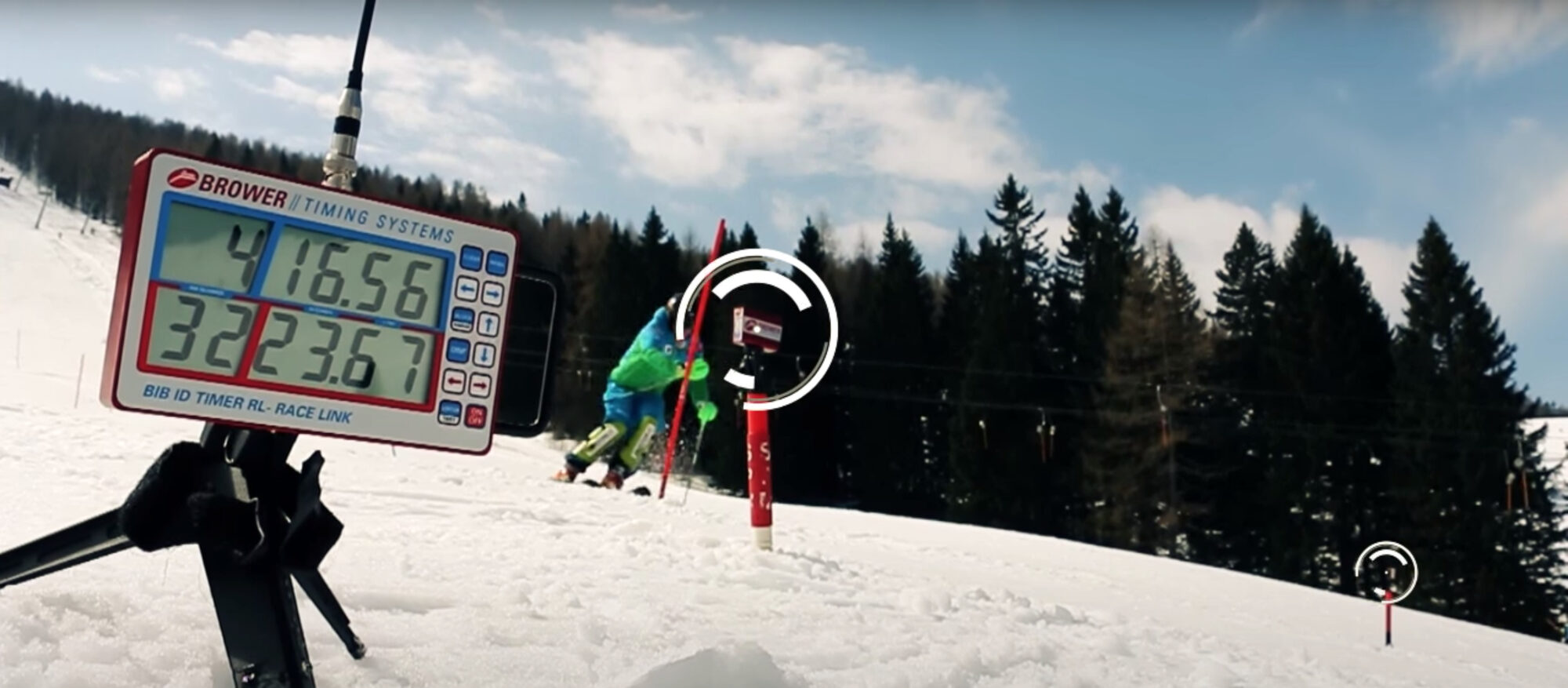Technology is playing an increasingly more important role in the lives of ski racers both on and off the hill. This influence is, no doubt, both helpful and detrimental to their athletic, personal, family, and social lives. This article is the first in a three-part series exploring how technology impacts racers, coaches, and parents, and how its strengths can be leveraged and its liabilities can be minimized to the ultimate benefits of racers’ goals as both athletes and people.
Timed runs have become an almost daily staple of gate training in our sport. From ski academies and club programs to national teams  around the world. having racers on the clock in training has become the rule rather than the exception when it used to be the reverse in previous generations. Clearly, coaches believe it is beneficial to their racers’ development. But a question I am often asked is, from a psychological and emotional standpoint, are timed runs helpful or harmful? My answer, as with most complex questions, is “It depends.”
around the world. having racers on the clock in training has become the rule rather than the exception when it used to be the reverse in previous generations. Clearly, coaches believe it is beneficial to their racers’ development. But a question I am often asked is, from a psychological and emotional standpoint, are timed runs helpful or harmful? My answer, as with most complex questions, is “It depends.”
Purpose of Timed Runs
To answer this question we should start with another question: What’s the purpose of timed runs? There are several (please let me know if I’ve missing any):
- A great tool for seeing what works technically and tactically. Your times in training give you immediate feedback about whether something you’re working on actually helps you ski faster.
- Encourages you to focus on fast skiing rather than just good skiing.
- Bridges the gap between training and races. The theory is that the more that you are on the clock in training, the more comfortable you will be when you are on the clock at races.
Based on my experience spending countless hours on snow with racers, there’s no doubt that they approach training on the clock differently than when they aren’t being timed. There is often a shift from a focus on technique and tactics to a focus on speed which is, obviously, the ultimate goal in ski racing. Racers are usually more deliberate in their preparations before timed runs. They raise their focus and intensity and adopt a more race-like mindset before they get into the starting gate. And racers charge to the first gate and don’t let up till they cross the finish line in their timed training runs.
ultimate goal in ski racing. Racers are usually more deliberate in their preparations before timed runs. They raise their focus and intensity and adopt a more race-like mindset before they get into the starting gate. And racers charge to the first gate and don’t let up till they cross the finish line in their timed training runs.
At the same time, I also notice the level of stress, doubt, worry, and, particularly, comparison rise among racers when they are on the clock in training. I even heard one racer not long ago say, “I got Browered!” after he didn’t have a good day of training while being timed. Racers know they are going to be judged by their coaches, their teammates, and, of course, by themselves. This awareness creates a shift from process to outcome and from self to others, both of which usually result in worse, not better, skiing.
To Time or Not to Time?
So now let’s return to our original question and my original answer of “It depends.”
Timed runs can do more harm than good if you succumb to the following pressures:
- You get overly competitive and focus more on trying to beat others than on your own skiing.
- Stresses you out.
- Causes you to focus on other racers.
- Frustrates and discourages you.
- Causes you to try too hard.
- Results in poor technique and tactics, reduced quality training, and a decline in motivation.
If you respond to timed runs in training this way, it may be wise for you to not input your number into the Brower or just not look at your times. Of course, another option would be for you to challenge your unhealthy reactions and retrain them so you can gain the benefits of timed runs.
Conversely, timed runs can do more good than harm if you approach them in the following ways:
- Motivate you to ski as fast as you can.
- Provide a point of reference of how fast you are skiing by comparing your times to your teammates (while also not beating yourself up if you aren’t as fast as them).
- Encourage you to experiment with new technique and tactics that will translate into faster skiing.
- Help you figure out how to go faster.
Defining Success in Timed Runs
An important realization is that the times you post in training have only limited informational value in how fast you are skiing, particularly if you are comparing yourself to your teammates. If you are crushing them in timed runs, that can certainly boost your confidence, at least temporarily. But the results of the timed runs may not be accurate because you don’t know what they were working on or how reflective their times are of how fast they are skiing. Conversely, if they are crushing you in timed runs, it may be that they are “bringing it” and you are focusing on technique and tactics rather than just going fast. In either case, you are often not comparing apples to apples, so the results can mean everything or nothing.
temporarily. But the results of the timed runs may not be accurate because you don’t know what they were working on or how reflective their times are of how fast they are skiing. Conversely, if they are crushing you in timed runs, it may be that they are “bringing it” and you are focusing on technique and tactics rather than just going fast. In either case, you are often not comparing apples to apples, so the results can mean everything or nothing.
Another thing to keep in mind is that some racers are really fast in training, but aren’t able to translate that training speed into races. I’ve seen a lot of “winners” in training who aren’t winners in races. Additionally, another important realization is that wining training races means absolutely nothing objectively. These “results” aren’t posted on the internet, you don’t get awards for your times, and they don’t impact your points or rankings.
Whether timed runs are good or bad for you boils down to your attitude toward them and how you define success in training. Aside from some usually short-lived psychological boosts from “victories” in training, wins and losses in timed runs mean very little.
Racers tell me that good times in timed training runs really helps their confidence, particularly as they approach races. The problem with  building your confidence with timing from today’s training is that it can cut the other way too, meaning disappointed results in timed training runs can hurt your confidence for upcoming races. As I often tell races, never judge your skiing based on how you skied yesterday. Instead, base your confidence on the accumulation of all of your preparations over the past weeks and months.
building your confidence with timing from today’s training is that it can cut the other way too, meaning disappointed results in timed training runs can hurt your confidence for upcoming races. As I often tell races, never judge your skiing based on how you skied yesterday. Instead, base your confidence on the accumulation of all of your preparations over the past weeks and months.
Instead, success in timed runs should be defined as:
- Staying focused on yourself.
- Being totally prepared to ski your fastest.
- Having a clear goal before every training session and run.
- Giving maximum effort, focus, and intensity every training run.
- Making progress toward or accomplishing your training goal.
- Having learned lessons to make you faster in the future.
- Using the timed runs as race simulations to get comfortable with being in the start gate on race day.
- Being a better skier when you leave the hill.
If you can maintain this attitude toward timed runs, then, by all means, get on the clock as often as you want. With this healthy approach to timing in training, you can gain a lot from its use and it will make you a faster ski racer on race day.






